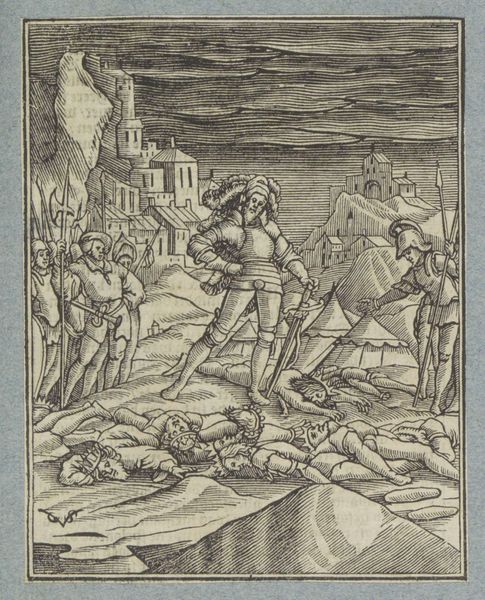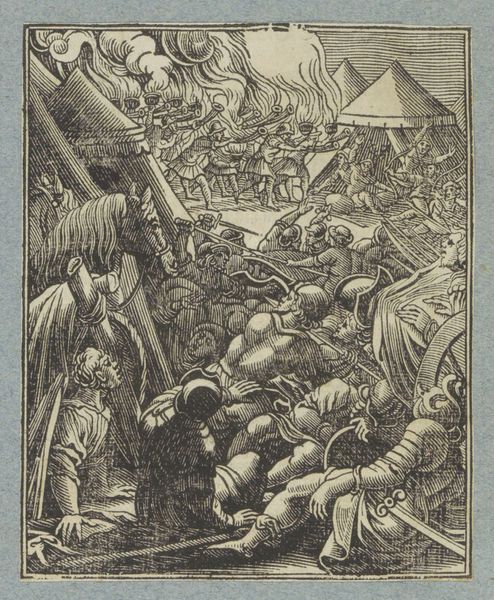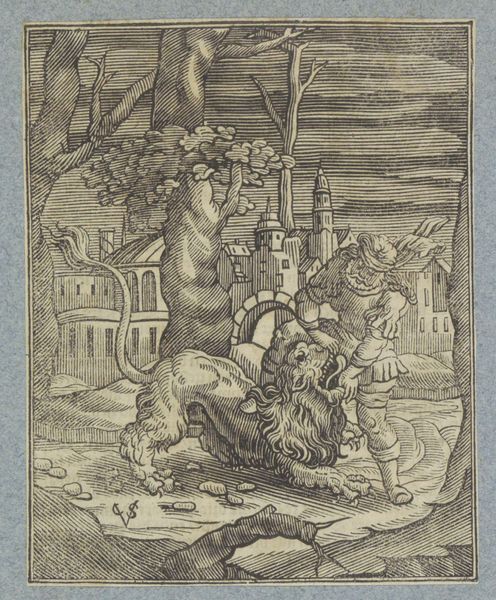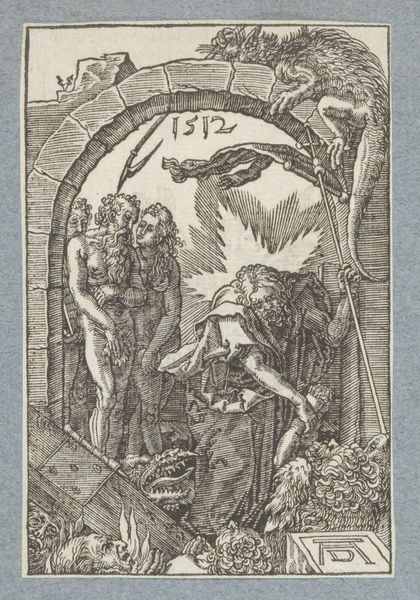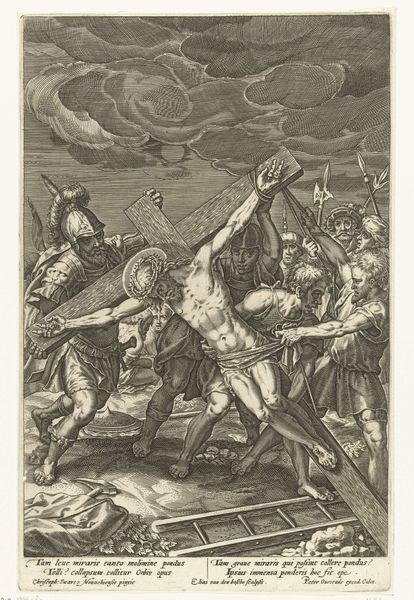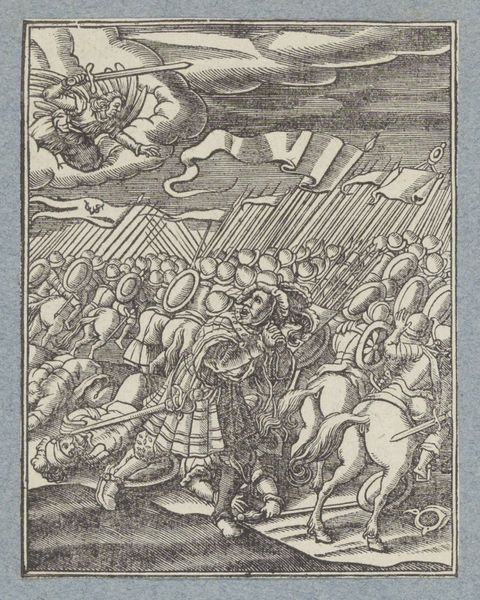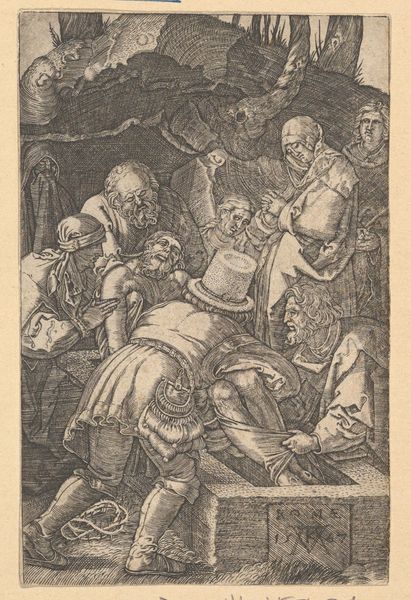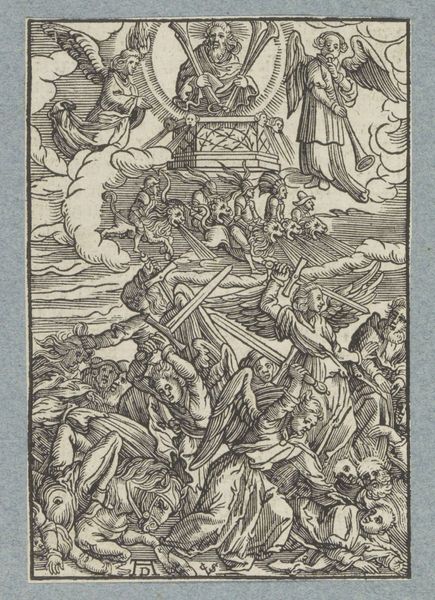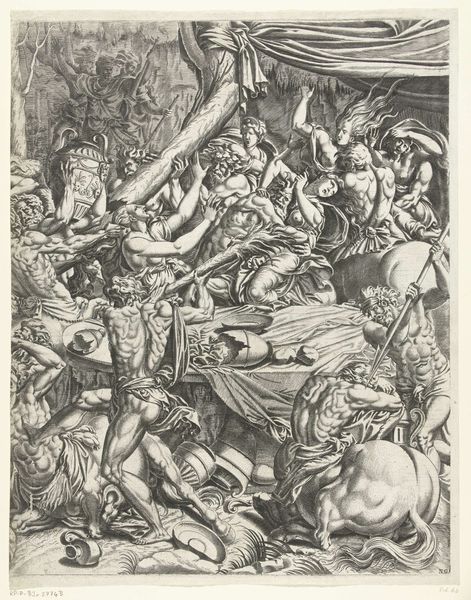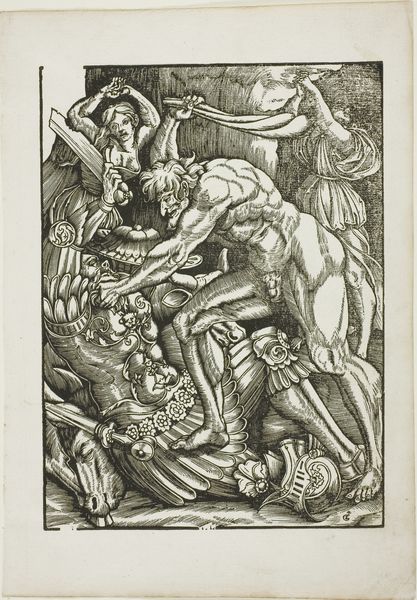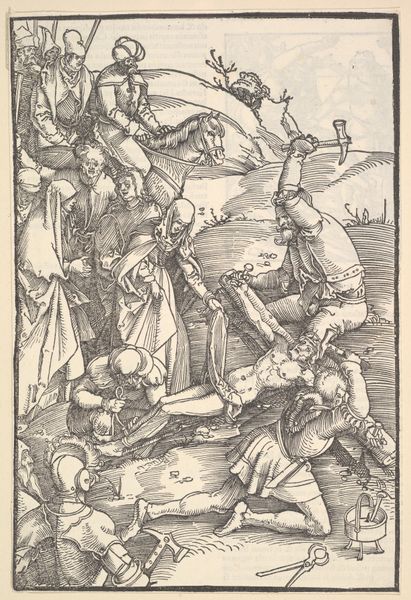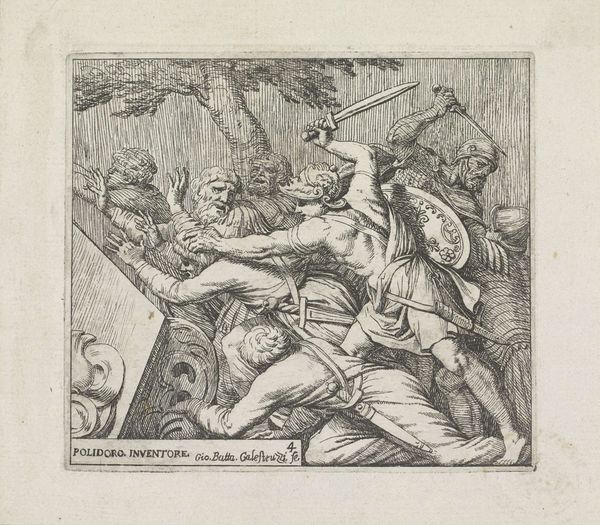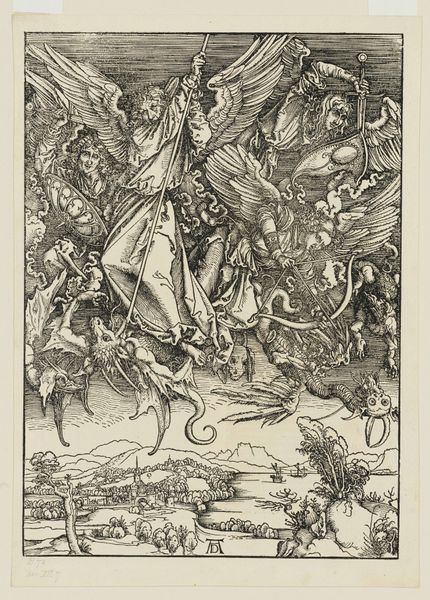
Judas de Makkabeeër en de wit geklede ruiter verslaan Lysias 1645 - 1646
0:00
0:00
print, engraving
#
narrative-art
#
baroque
# print
#
pen sketch
#
figuration
#
history-painting
#
engraving
Dimensions: height 111 mm, width 77 mm
Copyright: Rijks Museum: Open Domain
Christoffel van Sichem II created this woodcut of Judas Maccabeus and the white-clad rider defeating Lysias. It depicts a scene filled with conflict, where the white-clad rider symbolizes divine intervention, a motif deeply embedded in the human psyche as a sign of hope and salvation during turmoil. Consider how the image of a warrior on horseback recurs through history—from ancient Roman equestrian statues to Renaissance paintings of triumphant knights. The rider, often associated with power, authority, and righteousness, transcends its historical context. The white horse, a symbol of purity and victory, further amplifies this idea of divine assistance. This visual language taps into our collective memory, stirring deep-seated emotions tied to salvation and triumph over adversity. The composition itself, with the hero at the forefront and the defeated scattered below, evokes a sense of catharsis. This configuration is mirrored in countless artworks throughout history, each echoing a primal desire for order and justice. This is no mere battle scene; it's a narrative imbued with layers of cultural and psychological significance that continue to resonate.
Comments
No comments
Be the first to comment and join the conversation on the ultimate creative platform.
